OCEAN SPECIAL EDITION
NATIONAL GEOGRAPHIC INDONESIA, MAY 2021
Nationalgeographic.co.id—Our seas are plagued with endless list of problems, from the ocean waste to biota extinction threat. But at the eastern seas of the Indonesian archipelago, there is still hope for the earth and its inhabitants.
I did not meet these extraordinary people on purpose. It must have been fate. I feel Rajaampat was calling me. There, I witnessed so many miracles: on how God had entrusted the earth's paradise to humankind and set their life mission. These are the stories of those who are chosen to guard this planet.
I had the opportunity to get to know Konstantinus Saleo—27 years old— same age as me. He is a conservationist in West Yensawai, Batanta Island, Rajaampat Islands. I was listening a heroic stories about his father, Leonard Saleo, who died protecting the natural resources in his area.
He was known by the locals as the “Father of Conservation in Rajaampat.” He died on illegal logger hands after machete fight and end up by a spear. His death brought grief and sorrow throughout the island. This is the story of his life.
On 13 March 1968, Leonard was born in Kampung Yensawai to parents named Hendrikus Balay Saleo and Aleksina Mayor. He was strong-willed and principled. As a fisherman, he knew that fish stock was depleting because destructive fishing practices such as compressor fishing, potassium use, and bomb fishing in the area.
Konstatinus recalled his memories when he was in second grade of elementary school in 2002. One day his father took him diving to find sea cucumbers, but instead they saw a lot of dead fish and damaged corals. Seeing fisherman use bombs, Leonard chased and drove the fisherman off. Once, Leonard slapped a fisherman who had used fishing bombs. He tried hard to preserving marine resources.
“Someone used a fishing bomb in front of our village. So my father slapped him. He is a brother of my father murderer. My father was a harsh man. And he didn’t know whether someone held a grudge on him,” said Konstantinus. He remembered what his father used to tell him. “We live off the sea, and we owe our lives to the sea.” And so he strived to preserve it.
When Conservation International in Sorong posted a job vacancy in 2005, Leo applied and successfully passed the selection process. He was assigned as a field coordinator. His task was to monitor forest and coastal areas along the Dampir Strait.
In 2007, as part of his job, Leo built a guard post in Dayan Island. He engaged with communities living in coastal villages in the Batanta Island, including residents from Yensawai, Arefi, Amdui, Yenyar, and Yarweser. Together, they captured illegal loggers, trawl fishermen, as well as fishermen who used bombs, compressors, and potassium.
Konstantinus took me to visit his father’s grave. He said that the murderer was actually a good friend of his father’s, who would often visit their family home to dine together. The murderer, along with his associates, was part of an illegal logging syndicate in Papua who was eventually captured, and is currently serving his sentence in the Nusa Kambangan prison.
On March 1, 2010, Leo received a report from the community about illegal logging activities in Warmarwai, Batanta region. He reached the location where the illegal logging activities were reported, and made his way to approach three people he had recognized before. He sat down with them, conveying his point not to cut down trees. He noticed sharp weapons stored near the hut. He wanted to take those weapons with him back on his boat.
But they refused. They said that those weapons were being used for boar hunting. Leo believed them and agreed to give the weapons back. But that was when the massacre started. Among those who witnessed the incident were Leo’s older brother Elias Saleo, his cousin Andi Saleo, and Leo’s men who later came from Dayan Island. They tried to chase the perpetrators, but unfortunately Leo couldn’t be saved.
Leo didn’t leave much by way of inheritance. His lasting legacies were his words and good deeds. “In 2007, my father asked people to join him to plant mangroves, but only a few was interested. And now we feel the impact of coastal abrasion on our daily lives. The sand began to erode and many of the islands around Yensawai began to disappear,” Konstantinus told me.
In 2016, after finishing college, he wanted to carry on his father’s legacy. But then he chose a different path—to build a homestay.
“My father’s way was tough, extreme. An awful lot of ships were brought to the post for trial. I try to preserve nature another way. But the goal remains the same. I try to educate people about nature conservancy through the homestay,” Konstantinus said. “I built Dayan Homestay. That’s where I educate young children and the guests about the environment. In 2019 we received the best homestay award from Stay Rajaampat for our service and conservation efforts. We are known to guests as guardians of nature,” he added.
Konstantinus believed that people have become more aware that if a certain location has a homestay, then the area is not to be disturbed or damaged. Konstantinus shared the story of Leonard Saleo with every guest who came to his homestay. He wrote a note titled Forgotten Heroes, that told about Leo’s heroic life and death, and compiled testimonies from Leo’s comrades. One of them is Yusup Arifin, former fisherman who used a compressor—a wind pump, to be exact—to help him breathe underwater while hunting fish. Now he is an conservationist and the owner of Homestay Mandemor in West Yensawai.
“Om Leo has transformed me from a destroyer, into a guardian of nature and a conservationist. Om Leo has successfully eliminated all practices on Batanta Island that could potentially destroy our nature. today, it’s no longer what it used to be,” Yusup wrote.
The day was March 13. At the end of our encounter, Konstantinus said something unexpected. “I once dreamed that someone would come to my village. In my dream, I would take him to my father’s grave. I would tell him about his story and show him my writing about him,” he said. “And today, right on my father’s birthday, my dream came true. I met you,” he continued.
That got me speechless for a moment. And then I told him, “Maybe this is His way. And by the way, yesterday just happened to be my birthday.” We laughed over this serendipitous moment. Walking back to Leonard Saleo’s grave, we took some pictures together.
PROTECTING MARINE ECOSYSTEMS IS KEY TO OUR PROSPERITY
I met Max Ammer on Kri Island. Originally came from the Netherlands, he is known as the pioneer of scuba diving in Rajaampat. Max first came to Indonesia to find World War II relics in Daruba, South Morotai. He was inspired by the story he heard from the landlord of his Harley Davidson restoration shop in the Netherlands.
“I have a friend, a landlord in the Netherlands who was based in Morotai before and after the war. Daruba was the location in which General MacArthur was based before he went to the Philippines,” Max began his story. He told Max that by the end of the war, a lot of equipment were destroyed—over a hundred new Willys Jeeps were bulldozed.
Passionate about history, Max came to Rajaampat in 1989. Over the years, he discovered many valuable objects, one of them being the wreck of an aircraft flown by a United States pilot, Charles O'Sullivan. His learned how to dive when he was in the special forces unit of the Royal Netherlands Army. “I first came here to look for plane wrecks. I knew nothing about fish or corals. Even I destroyed parts of a coral reef to find a plane wreck. But soon I fell in love with nature and the people here,” Max recalled.
He felt a strong connection with the people of Rajaampat Max realized that he was being selfish. He wanted to do something to make it up to them, and so he built a resort.
At first, Max recruited a bomb fisherman. When they first met on Wai Island, the fisherman brought two turtles. Max bought the turtles and offered him to work as a dive guide so he wouldn’t have to catch any more turtles. Some of the other recruits were former illegal loggers and fishermen who used potassium to catch fish.
Max took me around his place. He showed me a panel of United States' P-47 aircraft, used during World War II. Max also showed me the catamaran and the helicopter he built himself. “I want people to succeed. I want to help people learn something,” he emphasized. He also taught people how to build ships. “In the end they could do it themselves. They replicated the ship and built a shipbuilding business,” Max said.
Max believed that no one would want to do something bad if they had a choice. Since his father and mother were born in Indonesia, it was easy for Max to interact with the local community.
I was curious, how Max felt about his nickname “scuba diving pioneer in Rajaampat”. He told me it didn’t really matter. To him the nickname may add commercial value, but nothing more. He prefers being known as the person who recognized the local value of Rajaampat. He may be the first person in the tourism industry to ever dive there, but he was most proud to be the person who understood its local value.
“We build traditional buildings. When you go to Papua, you want to see Papua, not Java or Bali. I wasn’t going to build windmills just because I’m Dutch. That would be stupid. Tourism is about authenticity, about showcasing how the local community lives,” he said. The beauty of Kri Island has moved him, spiritually. He felt blessed and lucky to be living in such a enchanting place.
We spent the evening with fresh drinks at his restaurant, mostly our conversation revolved around God and His blessings. And since Max seemed to see his life around the concept, I asked him: “What does blessing mean to you, Max?” He told me it was a tough question. “If you’re healthy, that’s a blessing. But the greatest blessing is your relationship with God. I feel blessed and when I look at you, I can see that you are too. But not many people realize that.”
SUSTAINABLE FISHERIES
Kampung Mutus is a fishing village thriving from the sea. They are famous for their marine aquaculture. It was Ateng, a Chinese descent from Jakarta, who started it.
Ateng first came to Sorong in 1989 in search of tongseng or red grouper. He sought fishing sites in the Yensawai and Batanta areas, but there the red groupers were few and far between. One day somebody from Kampung Mutus invited him to visit the village.
“It was my big brother who met with Ateng, he took him to Kampung Mutus. There were plenty of tongseng to find there. Eventually the village became a fishing village, because it can foster all the fish caught in the holding cage,” Markus Dimara, Chief of Kampung Mutus, told me.
Markus was one of the first to assist Ateng in the village’s aquaculture endeavors. They experienced the dark times of fisheries in the 90s. According to him, damages from bombs, potassium, and anesthetics used by the fishermen at the time still last to this day in Rajaampat.
“These days, fishermen would go out in the morning with twenty liters of petrol at most and go home with only ten fish, some only catch two. The fish stocks continue to decrease due to unregulated fishing in the past,” he told me.
“Now, tongseng is priced at over a hundred thousand Rupiah, while back then it used to be up to three hundred thousand Rupiah per kilogram. We’re just fishermen here, we live off the sea. Today and tomorrow, if the Almighty still graces the people of Rajaampat with showers of blessings, then we will still be alive, living in harmony with nature. The sea will give the people of Raja Ampat hope,” Markus concluded.
From my observation, some challenges remain in Rajaampat: there weren’t as many tourists, species were threatened with extinction, coral bleaching, and plastic pollution to name a few.
Tourism was dying, and it was especially tough for owners of dive centers or small homestays. Throughout the pandemic, only 15 visitors came to the Arborek Dive Shop owned by Githa Anathasia and Marsel Mambrasar. The Covid-19 relief donation were not accurately targeted either.
“We are disappointed with the relief package meant for dive centers and homestays, because to this day we still haven’t received it. We’re just a little upset. How come people who don’t work as a dive guide or at dive centers were prioritized? Meanwhile small business owners like ourselves didn’t receive the donation,” said Marsel, also a dive master.
There was no income from tourism. In the rare occasion that tourists were visiting, they prefer staying at the resorts, which were more luxurious. “Our target market before and during the pandemic has changed so much. It’s so different. People would rather stay at a proper resort than with the local community, although that’s not always the case. Currently, very few foreign guests are visiting, other than those already living in Indonesia,” Githa said.
Although the pandemic caused a drastic drop in tourist visits, it also gave Marsel and Githa an opportunity to rethink what sustainable tourism truly means. They discovered other sources of income, such as gardening and making cured fish. “That’s what we need to understand about sustainable tourism, even when there are no tourists,” Githa told me.
The pandemic gravely affected Rajaampat tourism. The economic relief packages should have reached and helped the coastal community. Restoration activities, coastal cleanup and improvement of village infrastructure could create jobs while improving their economic resilience.
I met with Awaludin Noer Ahmad a.k.a Wawan Mangile. He worked in the Yayasan Konservasi Nusantara as a program coordinator for the Bird’s Head region in Papua. When the pandemic first broke, he said the city’s entire economic activity stalled. But there are many ways to survive in Rajaampat.
“The community is aware of the pandemic, but they’re not worried about food. That’s because we believe that conservation is the way. If tourism is dead completely, we will be miserable. But the villagers in Rajaampat said, oh we still have fish, sago, and kasbi. It’s only money we didn’t have. Tours are merely a bonus from conservation,” he said.
Wawan told me about the history of conservation in Rajaampat before it was established in 2014. In 2001, a survey on Rajaampat was conducted as part of the Coral Triangle Initiative, aimed at supporting the richest marine biodiversity in the world.
Marine Rapid Assessment was carried out by Conservation International, Cendrawasih University, University of Papua, Research and Development Center for Oceanology, The Indonesian Institute of Sciences, Australian Institute of Marine Science, and Western Autralian Museum. The survey recommended that Rajaampat should be protected, and its utilization regulated.
However, according to him, conservation has long been embedded in the local wisdom. But the results were not optimal because it wasn’t combined with science. It would be best if the community turn to science as a manual for conservation.
“For instance, during sasi, they would only take sea cucumbers of a certain size. They wouldn’t just take everything. It would be 5-6 years until another sasi [if they took it all],” Wawan said. “When restricted, they can harvest every year. They don’t catch lobsters that have eggs either. This way we can preserve the lives of sea cucumbers and lobsters.”
Sasi, the local wisdom of Rajaampat, ensures the sustainability of natural resources. Particularly in the sea, biota should not be captured during a certain period of time, before being harvested simultaneously. This tradition ensures that biota can reproduce and not go extinct.
This wisdom can be replicated in other regions of the archipelago. The government may grant harvest rights to coastal communities, or to enterprises, under certain terms and limits. This rights-based principle can encourage better management, and increase fishery productivity. Marsel used to catch sharks before Rajaampat was designated as a conservation area. “I know now,” he said, “if we don’t catch sharks, turtles, manta rays, the foreigners will be happy. They would even stay in Rajaampat for one to two months at a time.”
REDUCING PLASTIC WASTE
I am reminded of a study by Joleah B. Lamb et al, Plastic Waste Associated with Disease on Coral Reefs (2018). Plastic waste can increase microbial colonization by pathogens in the ocean. When coral reefs come into contact with plastic, the likelihood of disease increases from four to 89 percent.
And then there is the issue of tourists, who did not seem to care much about the environment. Marcel gave an example regarding to liveaboard tours in Rajaampat. “They would lift up their anchors at diving sites or in protected areas,” he said.
According to Marsel, the majority of waste comes from Sorong and Waisai. Wawan echoed his sentiment. “Sorong has become the second largest town in Papua after Jayapura. Even the municipal government acknowledged that they were overwhelmed. They need help from partners and the local community to join their efforts in reducing waste,” he said. “In Biak, a local ordinance was established to ban plastic bags, so everyone is back to using noken.”
Reducing waste is an end-to-end undertaking. In addition to initiatives like beach cleanups, incentives for innovation and plastic recycling are needed, along with strategies to reduce plastic use.
“There will be a lot more environmental issues in the future,” added Wawan. Climate change has become more and more evident. Coral bleaching has increased—a tell-tale sign of declining water quality in the oceans. “Scientifically speaking, climate change is inevitable. But what we can control is to ensure environmentally-friendly waste management and tourism.”
THE MORAL OF THE STORY
I walked away with two memorable encounters. Having witnessed both majestic whales and pervasive waste at the same time, I asked myself: what is God's Plan for Rajaampat? What role will humans play?
We set sail from Sorong to Waisai. Along the way, we saw plastic trash drifted along the ocean surface. At one point, crew members had to shut down the engine to prevent the trash from clogging the propellers.
As soon as we were back on course, one of the crew members, Mei Habel Faidan, shouted, “Look! Whales!”
Marsel, who was captain of the boat, shut down the engine again. We sailed slowly. I saw three Sperm whales—swimming on the surface. A gust of air mixed with seawater was released from their blowholes.
Wooooooshhhh!
A family of whales came and approached our boat. They got so close, only two or three meters away from us. I heard their distinctive clicking sound, as if they were welcoming us to Rajaampat.
I told this story to every person I met. And they all said, “You are a lucky man. A blessed man.”
At first, I was confused. Is it really a rare moment, seeing whales? Turns out, it is. Many locals are still waiting for the honor.
Yet for some miraculous reason, it happened to me more than once. On our last day in Rajaampat, on our return journey from West Yensawai to Sorong, it happened again. This time, plastic waste was actually stuck in the propeller, stalling the engine. We stopped for quite some time, another boat leaving us behind.
After the engine was fixed, it was Habel once again who noticed movement in the water. Marsel turned off the engine. I saw the vast expanse of sea as the ship sailed slowly. And then, a whale came to the surface. It happened very quickly. And then it was gone. We didn’t have time to notice what type of whale it was. It was grayish.
So if seeing a whale was supposed to be a rare moment, why did it happen to me twice? And yet, with all the trash floating in the oceans, is there a chance for this Earth to be sustainable? Or will it only be the fairy tale that it is today? Alas, it is up to us to take care of nature with all our might. Marsel himself has witnessed how a healthy ocean has been a blessing to him. “Conservation is the answer to our prayers,” he said.
—Fikri Muhammad Staff Writer of this magazine, who has a newfound interest in diving upon visiting Rajaampat. Donny Fernando, Staff Photographer, who has enriched his perspectives on conservation upon this debut assignment.
| Source | : | National Geographic Indonesia |
| Penulis | : | Fikri Muhammad |
| Editor | : | Mahandis Yoanata Thamrin |
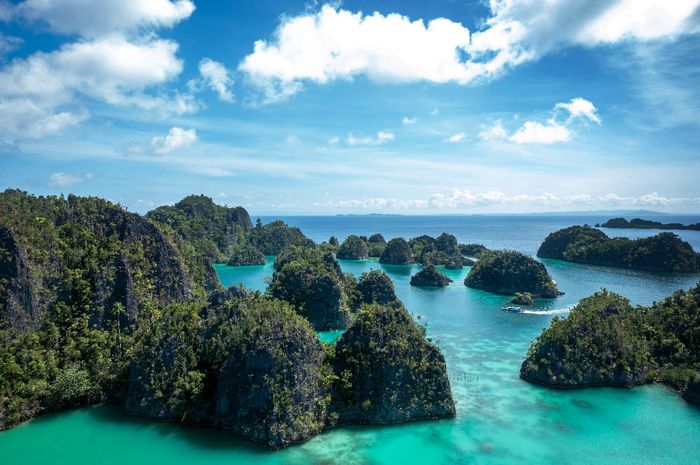
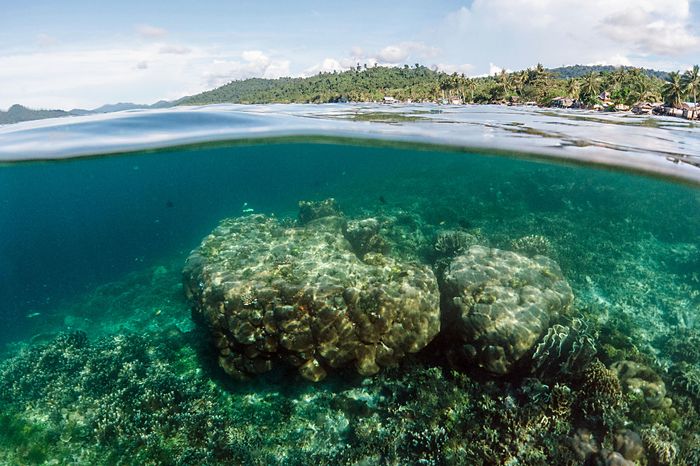

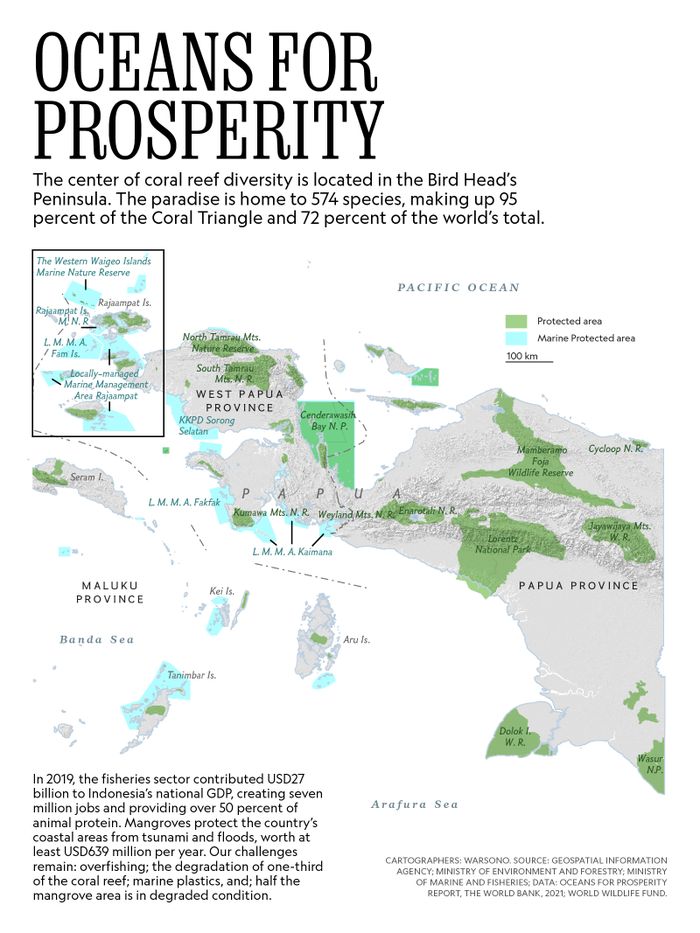



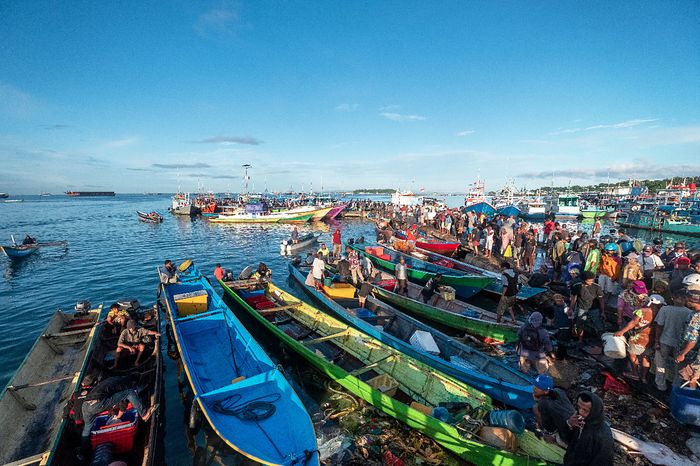

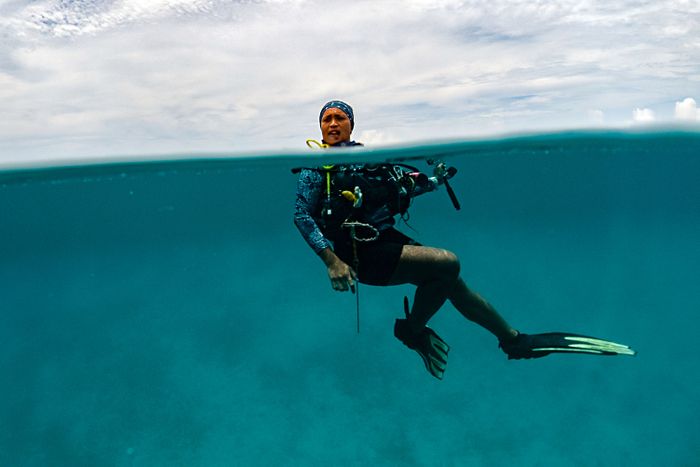
KOMENTAR